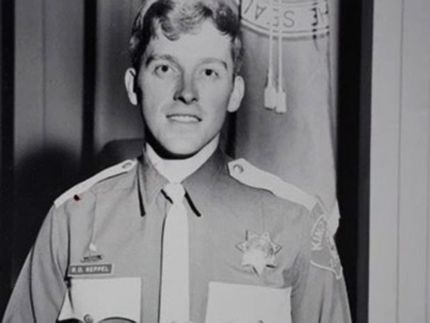We all know the name Ted Bundy. Many of us also know the names of his victims and the details of their murders. But how many know the names of the key players who helped catch him and put an end to his killing spree? We’ve compiled everything you need about the individuals behind the legendary take-down of one of the nation’s most notorious serial killers.
Robert D. Keppel

Keppel continued a correspondence with Bundy from the time of his initial imprisonment to his execution in 1989.
Photo Credit: Wikimedia CommonsTed Bundy was Keppel’s very first case as a homicide detective. In fact, he had only been on the job at King County Sheriff’s Office in Seattle for a week when it fell into his lap. He was assigned to investigate the disappearance of two women from Lake Sammamish. They would both turn out to be Bundy victims, and so began the long relationship between detective and serial killer.
Bundy was known as a master of manipulation, but Keppel was never fooled. It’s why he could sit calmly through Bundy’s detailed descriptions of how he murdered, raped and dismembered dozens of women. In a final coup, Keppell got Bundy to confess to several more unsolved murders just before his execution.
But the relationship between Keppel and Bundy was more than just cop and criminal. When Bundy was on death row, he reached out to the detective who had helped put him there to offer his help in catching another notorious murderer, the so-called Green River Killer. That led to Keppel’s 1995 book The Riverman: Ted Bundy and I Hunt for the Green River Killer. The book was made into a movie in 2004 starring Bruce Greenwood as Keppel and Cary Elwes as Bundy.
Related: 8 Twisted Confessions from Ted Bundy That Will Make Your Skin Crawl
Keppel and Bundy continued a loose correspondence until Bundy’s execution in 1989. Keppel went on to become one of the nation’s top experts on serial killers, earning two master's degrees and a Ph.D in criminal justice. He co-authored, with criminal profiler Richard Walter, a transformative article that breaks serial killers down into four psychological sub-types. It has become a useful tool for investigators. He also developed the Homicide Investigation Tracking System, a violent crime database that extends from Oregon and Washington to Canada.
After taking down Bundy, Keppel has taken the lead on more than 50 serial killer cases.
Liz Kloepfer

Kloepfer's relationship with Bundy would continue well past his initial incarceration in Utah in 1976.
Photo Credit: Wikimedia CommonsElizabeth “Liz” Kloepfer was a recent divorcée, working as a secretary at the University of Washington Medical School, when she met the handsome, charming Ted Bundy. They began a seven-year relationship. Bundy was not only seeing other women during those years; he was raping and killing them. In 1974, Liz grew suspicious of his behavior. She even tried contacting the police, who, at that point, knew they were looking for a serial killer. She is quoted as telling them:
“Ted went out a lot in the middle of the night. And I didn’t know where he went. Then he napped during the day. And I found things, things I couldn’t understand.”
Related: Ted Bundy's Former Friend Speaks Out for the First Time
Among those things: a lug wrench under his car seat, an oriental knife in a wooden case, a meat cleaver, plaster of Paris, and a pair of crutches. Bundy’s friends and co-workers, including Liz, had also noticed the resemblance between Bundy and the police facial sketches. Unfortunately, at the time, police were receiving almost 500 tips a day and never followed up on Liz’s information.
What’s most striking is that Liz remained with Bundy even after contacting police, and even after Bundy was arrested for the kidnapping of Carole DaRonche. During the extensive interrogations, Bundy claimed to have burned the head of his fifth victim, Donna Manson, in Liz’s fireplace.
Related: How Infamous Serial Killer Ted Bundy Helped Take Down the Green River Killer
Kathleen McChesney

Just 24 years old, McChesney was one of only four female detectives in King County when they were hunting for Ted Bundy. She felt a particular affinity for his victims. Most of them were just a few years younger than she was. When she joined the case, investigators had more than 3,000 suspects, but they knew the man they were looking for might be named “Ted.”
Related: 15 True Crime Books by Ann Rule That You Won’t Be Able to Put Down
McChesney proved to be an incredible asset. Perhaps because she was the age and gender of Bundy’s victims, she brought fresh insight to the case. She reasoned that “Ted” had to be intelligent and charming because young, educated women were willing to go out with him. She guessed he had gone to college since he hunted and felt comfortable on college campuses.
In the years after Bundy’s arrest and execution, McChesney built a renowned career for herself in law enforcement. She spent 24 years at the FBI, eventually rising to Executive Assistant Director. She still credits Keppel and her colleagues in Seattle for seeing past the gender biases of the 1970s and bringing her onto the team.
Featured photo: Wikimedia Commons
